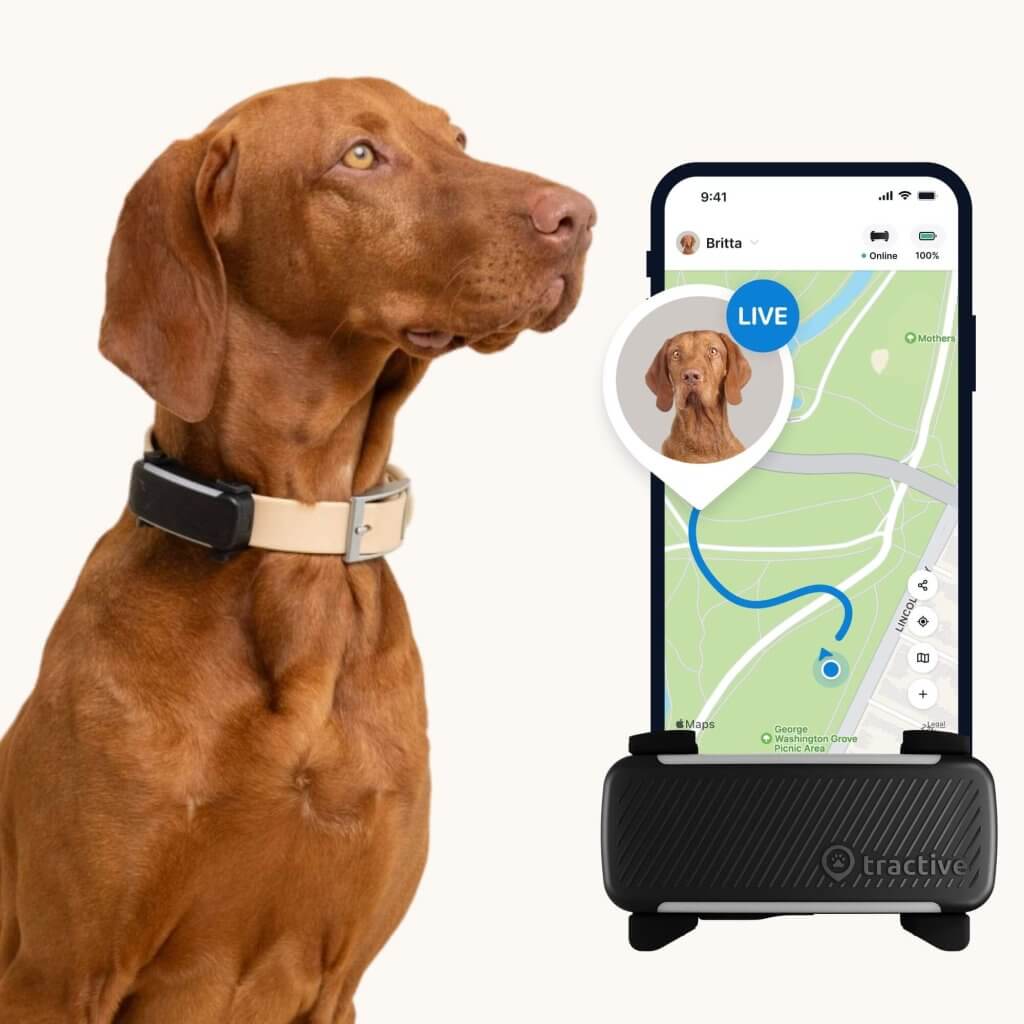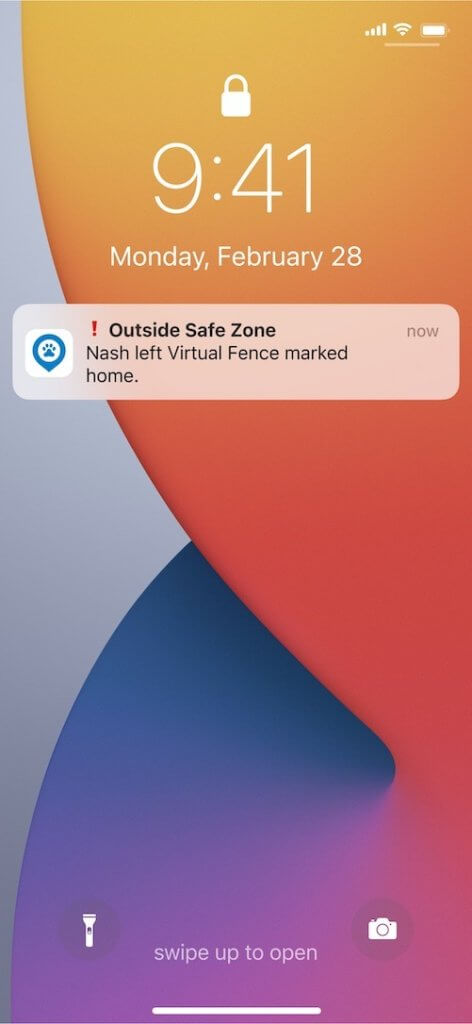Living With A Blind Dog: Be A Guiding Paw For Your Buddy
Raising a blind dog - or just living with one that's gotten that way over the years - can be highly fulfilling, but understandably challenging. So here's how to help them live their best lives by your side - and ensure their safety at every step.
Whether they were born without eyes or have just been losing their vision with age, living with a blind dog can still be one of the most rewarding, fulfilling experiences you could ever have. So here are our top tips and advice on how to live with and care for a blind dog – and the number one way to keep them safe, loved by dog parents around the world.
Key Takeaways
Create a safe and familiar environment
Keep furniture in a consistent location, block off dangerous areas with baby gates, and stick to a consistent daily routine to help your dog feel secure.
Stimulate their other senses
Use noisy toys, hide treats, and scent furniture to help your dog create a “memory map” of their surroundings.
Train and socialize your dog plenty
It’s important they learn to behave around other people and pets. (Just like any other dog.) Regular training can also help them stay calm and not panic so quickly.
A Tractive smart dog tracker can provide safety
With real-time GPS tracking and Virtual Fences, you can prevent your dog from escaping in a disoriented panic. This is especially useful if you’re leaving them at home alone for any amount of time.

Always know your buddy is healthy & safe
Read moreIs it cruel to keep a blind dog?
The answer is emphatically no. With the right planning and prep, you can give yours as wonderful, happy, and safe a life as any other dog. Dogs are also incredibly adaptable – relying on senses besides just their vision to get around, including their incredible sense of smell and powerful hearing.
A dog that’s been born without eyes or has lost their vision from a young age will also learn to adapt and get around even earlier. Plus, with love, patience, and proper care, blind dogs can and do lead happy, fulfilling lives. Continuing to enjoy their favorite activities, including playing fetch, enjoying walks, and spending time with their favorite people – you!
💡A smart dog tracker can be an important emergency measure in case your buddy is prone to anxiety or likely to flee from an unfamiliar environment. With real-time tracking, you’ll be able to follow your dog’s every move – as they make their every move. Or prevent them from escaping by setting up a GPS-monitored “safe zone” around your house that’ll send you an escape alert if they do.
Read more: Kat’s Story: Peace of Mind For A Blind Senior Dog

Follow your dog anywhere
Get real-time location information, wherever they go. And find out when they try to make an escape, or just when they go somewhere they shouldn’t, with Virtual Fences.
How to care for a blind dog
Unlike what you might expect, caring for a blind dog isn’t much different from any other dog! You do, however, need to adjust your daily routine and environment to set your buddy up for success. So you should:
Create a safe & familiar environment
Your buddy might bump into furniture a bit more often than not – but they usually rely on their sense of smell, hearing, touch, and memory to get around. Which is why it’s so important to set up a safe, predictable environment with everything in more or less the same places as before.1 This includes your:
- Home layout, especially furniture. Keep things in consistent places without shifting around furniture too much. Else, it can be confusing and disorienting for your dog.
- Rugs and mats can help your dog learn different boundaries from the tactile feedback, i.e. where some rooms begin and end.
- “Risky” spots around home, including staircases and pools. A baby gate or barrier can prevent your buddy from taking a tumble.
- Any sharp corners or edges, like tables and kitchen counters. Cover these to prevent your dog from bumping into them and injuring themselves.
- Electronics, which you want your buddy to avoid at all costs – especially if they’re teething!
All these adjustments help your dog create a mental “memory map” of how to navigate your home through their other senses, even if their vision isn’t the best. The sense of familiarity alone will help them get around just fine with time.
Keep your dog’s senses sharp
By engaging their sense of hearing, smell, and touch, you can help keep their senses sharp – and make it easier for them to adjust to new environments.2 For example:
- Use noisy toys with bells or that squeak, for example, to attract your dog’s attention while training.
- Hide treats or toys around a room and get your dog to sniff them out and bring them back to you. Ideally, you should start from one room and then gradually move on to a bigger area so you don’t confuse your dog.
- Spritz your furniture legs with a bit of scent to help your buddy recognize where they are around your house. (Without moving them around too much.) Like, for example, your dog’s bedding, the back door, and staircases. This can help them orient themselves and find their way around more easily.
“Another great way to enhance their quality of life is by introducing a companion pet.
A sighted furry friend can serve as a guide, relying on their hearing and smell to lead the way.“
– MedVet3
- Lay out a trail of treats to “guide” your dog to specific areas – especially if they’re reluctant to explore.
- Use a specific mat or rug near your dog’s food and water bowls to help them realize that this specific tactile sensation beneath their paws = meal time. Or the sound (or sensation) of their leash and harness = time for walkies.
- Your voice! Speaking regularly to your buddy is one of the best ways to engage their sense of hearing – and also give them the comfort and reassurance they need to relax. Use a calm, soothing tone to help them feel calm, especially if you’re outdoors or in a new and unfamiliar environment.
Make regular training a priority
Yes, even blind dogs are capable of picking up new skills and tricks, as well as learning the basic dog commands. But since they can’t see you, you’ll need to use your voice and engage their other senses instead. So grab some treats, get ready for some practice, and try some verbal cues like:4
- “Sit”
Use a noisy toy to attract your dog’s attention while moving it above their head. Your buddy will follow it with their nose as you move it upwards – making their butt touch the floor automatically. Say “Sit” out loud – and give them a treat right after. - “Wait”
Walk with your dog next to you and clearly say “Wait” – and stop. Reward your dog if they stop with you as well. You could attach a bell to your foot or pants to help your dog hear you moving. - “Walk on,” or “Let’s go”
Very gently tug your dog’s leash to resume walking. (Or pat them on the shoulder – just remember to use the same motion every time.) Reward them if they walk along with you as well. - “Up,” and “Down”
Let your buddy sniff around at first – and reward them if they climb along with you. (Be prepared to practice this one quite a bit!) “Left” and “Right” work similarly to “Up” and “Down” – leading your buddy in specific directions.
Socialize your buddy plenty
So they learn to figure out boundaries and what’s acceptable behavior when around others. Better yet, you can also take the opportunity to educate others how to approach your dog so as not to startle them. (Like never touching them unexpectedly.) These experience all count as training opportunities for your buddy, especially since they’re in “new” environments and full of distractions. Like, for example:
- Regular dog park visits, where you let your buddy sniff around and engage with other dogs.
- Dog play dates with your friends and loved ones – and of course, their dogs.
- Visiting dog-friendly establishments in your area, including cafes, restaurants, beach fronts, and more. (Just be sure to call ahead and check whether dogs are allowed!)
- Regular vet checkups and visits to the grooming parlor. Especially to get your dog used to gentle handling by strangers whose scents they might not recognize right away.
⚠️ In all these situations, keep your dog firmly leashed. We’d only recommend you let them off-leash if it’s a safe, enclosed area. (Where you’re 100% sure you can intercept them if they bolt off.)
How to safely leave a blind dog home alone
For a blind dog, you do want to ensure their home environment helps them feel extra secure. (Especially when you’re not around.) So we’d always recommend you get someone to check up on your dog periodically. Ideally someone they’re familiar with – like one of your friends, loved ones, or even a neighbor.
Set up a designated “safe space” indoors
Which should include:
- Your buddy’s dog bed
- Some of their favorite toys
- A favorite blanket – or one of your shirts or sweaters (something with your scent)
- Access to water throughout the day
- Some background noise, like the radio or TV at a low volume. This can help mask any sounds from the outdoors (like the garbage truck) that might spook or startle your dog.
- Ideally, some interactive toys, like treat dispensers or food puzzles to keep them occupied.
It’s also a good idea to keep this as an enclosed area where your dog can stay while you’re not at home. (Like a large room or a big playpen full of toys.)
Test out a monitoring device
With indoor (and outdoor) cameras, you can check on your dog remotely by connecting them to your phone. Some pet cameras even let you talk to your dog or give them some treats!
⚠️ But we’d advise you to be cautious using a “talking” pet camera for a blind dog. The sound of your voice might get them excited and happy…but then they might also get confused and anxious if they hear you – but then you don’t turn up. (Like from your scent or any pats or playtime.)
So it makes sense to test out how your dog reacts to the sound of your voice. (Even when you’re not around.) Like by calling their name from another room they can’t enter or over the telephone. Keep an eye out for whether your disembodied voice spooks your dog or they don’t seem bothered by it. Depending on how they react, you can make a choice between just a regular pet camera – or one with a speaker option.
Use a smart dog tracker to prevent any escape attempts
Losing our sight can be terrifying – and even more so for your dog. It’s a confusing, disorienting experience that might trigger a panicked escape attempt where they might’ve run off miles before you realize they’re missing. But not so if you’ve invested in a dog GPS tracker.
💡 For example, with the Tractive GPS, you can set up a “safe zone” around your home and backyard when leaving your buddy at home. This instructs your tracker to monitor your dog’s location while they stay within this safe zone.
But the minute your dog tries to run past or sneak out of this “safe zone”…


…you get an escape alert to your device – so you can intervene right away. (No need to set up an expensive physical fence or get into an argument with your local HOA.)



